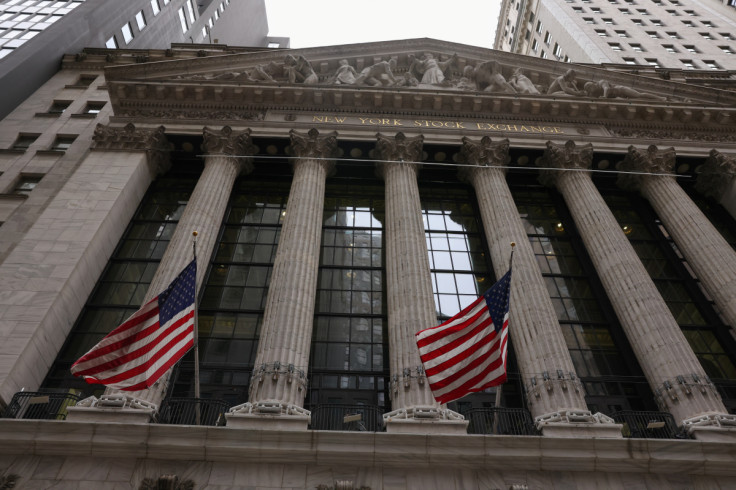Wall Street Rallies Despite Dismal Jobs Data as Fed Rate Cut Hopes Surge

In a week that should have rattled investor confidence, Wall Street has instead rallied—with major indices climbing, even in the face of discouraging US labour data. The apparent contradiction has prompted analysts to take a closer look at the market's underlying resilience—and what might be fuelling the optimism.
The July US jobs report delivered a below-par performance, but investors seemed more focused on the implications for future interest rate cuts than on the immediate economic weakness.
The divergence between weak labour data and rising equity markets reveals a complex interplay of factors influencing Wall Street's trajectory.
Weak Jobs Report Stirs Initial Concerns
The July jobs report from the US Labour Department delivered a sobering message: only 73,000 new jobs were added last month, a figure significantly below economists' expectations of around 104,000.
While any positive job creation would typically be welcomed, this low number sparked immediate concerns about the health of the economy. Adding to the unease were downward revisions to previous months, with the gains in May and June collectively reduced by 258,000 jobs, highlighting a slowing pace of hiring.
This sequence of data nudged the unemployment rate slightly upward to 4.2% from 4.1%, a change that, while modest, added to the growing narrative of economic softness.
Economists and market watchers immediately began weighing the potential implications of the report. Some fear that these figures could be early indicators of an impending economic slowdown or even a recession, especially amid ongoing uncertainties such as trade tensions and inflationary pressures.
However, others caution that labour market data can be volatile from month to month and should be considered in conjunction with broader economic indicators.
Fed Rate Cut Expectations Fuel Market Optimism

In response to the unexpectedly weak labour data, investors rapidly recalibrated their expectations for Federal Reserve monetary policy.
The likelihood of a 0.25% interest rate cut in the Fed's September meeting surged to roughly 80%, compared to less than 40% before the release of the report.
This shift reflects the market's belief that the Fed may pivot towards a more accommodative stance to support the economy if growth slows further.
Lower interest rates generally reduce borrowing costs for consumers and businesses, thereby stimulating spending and investment.
For sectors such as housing, technology, and manufacturing, rate cuts can be particularly beneficial. The prospect of easier monetary conditions has been a key factor in bolstering investor confidence and driving the recent market rebound, despite economic uncertainties.
Tariffs Add Complexity to Economic Outlook

Complicating the economic picture are President Trump's recent announcements of new tariffs on a range of trading partners.
While the administration frames these measures as efforts to protect domestic industries and rectify trade imbalances, such tariffs often provoke retaliation and can disrupt global supply chains.
The resulting trade tensions create headwinds for multinational corporations, potentially undermining business investment decisions.
Markets have shown mixed reactions to the news of the tariffs. Some investors worry that escalating trade disputes could dampen economic growth and corporate earnings.
Others believe that the US government will eventually reach trade agreements that mitigate these risks. The uncertainty itself, however, tends to fuel volatility and cautious sentiment among market participants.
Tech Sector's Resilience Amidst Volatility
Amid the broader market turbulence, the technology sector has stood out as a source of strength. Leading tech giants, including Tesla and Amazon, have recently reported strong earnings and positive outlooks.
Notably, Tesla announced a $29 billion shareholder award, signalling robust financial health and investor confidence.
Technology companies tend to benefit from innovation-driven growth and strong demand for digital products and services, making them more resilient in uncertain economic environments.
Investors continue to see the sector as a potential refuge during periods of macroeconomic stress, providing both growth opportunities and a buffer against volatility.
Navigating Uncertainty with Caution

While Wall Street's ability to shake off weak labour data is notable, the combination of evolving Federal Reserve policies, trade-related uncertainties, and sector-specific dynamics paints a complex economic landscape.
Investors would be wise to maintain a cautious approach, balancing optimism about potential rate cuts with awareness of geopolitical risks and underlying economic vulnerabilities.
As the markets continue to digest new data and policy signals, flexibility and vigilance will be crucial in navigating the path ahead.
© Copyright IBTimes 2025. All rights reserved.



















